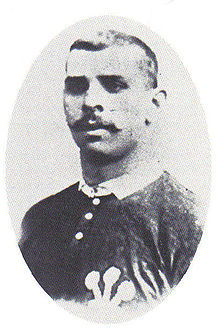Henry Thomas Phillips was a Welsh international rugby union lock who played club rugby for Cross Keys and Newport and international rugby for Wales. Phillips was a collier by profession before becoming a police officer, and was the nephew of former international Wales player Harry Day.
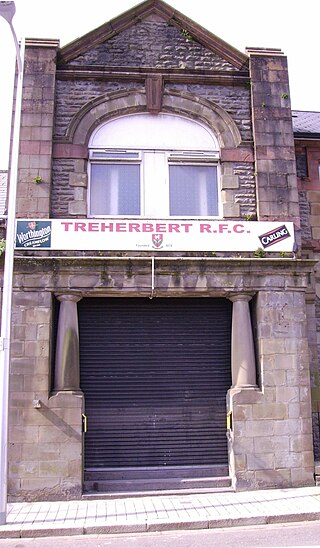
Treherbert Rugby Football Club is a Welsh rugby union team based in Tynewydd in the Rhondda Valley. Treherbert RFC play home games in red shirts with black shorts and black socks. Today, Treherbert RFC plays in the Welsh Rugby Union Division Four South East league and are a feeder club for Cardiff Blues.
Aberdare Rugby Football Club is a rugby union club based in the town of Aberdare, Wales. Aberdare RFC play in the Welsh Rugby Union Championship (East) Division and is a feeder club to Cardiff Rugby.

William O'Neill, often recorded as Billy O'Neil or Billy Neil, was a Welsh dual-code international rugby union and rugby league front row player who played club level rugby union (RU) for Cardiff and Aberavon, and as a professional rugby league footballer he represented Warrington. O'Neill was capped eleven times for the Wales rugby union national team, and twice for the Wales national league team. Although playing throughout the 1904/1905 season, he missed the classic 1905 Wales win over the Original All Blacks. He is often registered in many sources under the name Billy Neill or Neil because the Welsh Rugby Union didn't want him to sound like he was Irish.
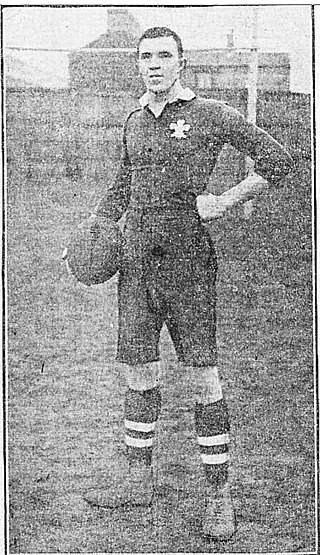
George "Twyber" Travers was a Welsh international hooker who played club rugby for Pill Harriers and Newport Rugby Football Club. He won 25 caps for Wales between 1903 and 1911.
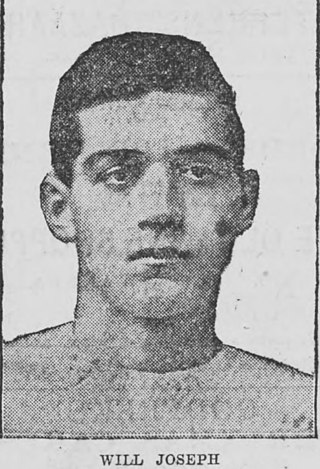
Will Joseph was a Welsh international rugby union player. He was a member of the winning Welsh team who beat the 1905 touring All Blacks. He played club rugby for Swansea and county rugby for Glamorgan.
Harry Hiams was a Welsh international forward who played club rugby for Swansea and Llanelli. He won two caps for Wales and played for Llanelli against the touring South Africans. During the First World War, Hiams served with the Royal Field Artillery.

Jack Bassett was a Welsh international rugby union full back who played club rugby for Penarth. He won 15 caps for Wales and was selected for the 1930 British Lions tour of Australia and New Zealand. He captained the Welsh team on nine occasions.

Frank Hill was a Welsh international rugby union forward who played club rugby for Cardiff. Hill won 15 caps for Wales over a period of ten years and was given the team captaincy on four occasions.
Nathaniel "Danny" Walters was a Welsh rugby union forward who played club rugby for Llanelli and international rugby for Wales.
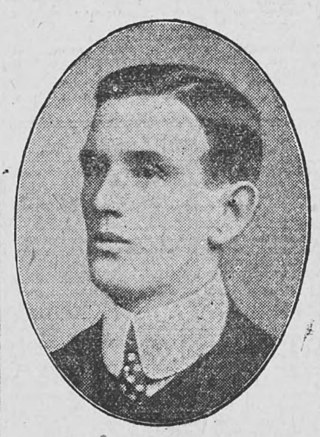
Lieutenant Hopkin "Hop" Thomas Maddock MC was a Welsh international rugby union wing who played club rugby for Pontycymer and London Welsh and county rugby for both Glamorgan and Middlesex. Maddock played in six international rugby games for Wales scoring a total of six tries. A pacey and elusive runner, Maddock set several scoring records at London Welsh, and scored 170 tries during his career with the club.

John "Jack" Anderson Powell was a Welsh international rugby union forward who played club rugby for Cardiff and London Welsh. Powell played a single international game for Wales, in 1906, and faced the Original All Blacks as part of the Glamorgan county team in 1905 and the South African team as a member of the Cardiff team in 1907.
Glamorgan County RFC is a Welsh rugby union club that manages an invitational team, known as Glamorgan that originally played rugby at county level. The team is made up of amateur players from sports clubs in the Glamorgan region and historically played matches against other county teams from Wales and England, and during the 20th century was a key fixture for touring international teams. Today the club manages Glamorgan's premier rugby union tournament, the Glamorgan County Silver Ball Trophy, and arranges invitational Glamorgan teams to face Welsh rugby clubs during celebrations, such as anniversaries.
John "Jack" Charles Jenkins was a Welsh international rugby union forward who played club rugby for Newport and London Welsh. He won just a single cap for Wales in 1907 but faced both New Zealand and South Africa at county level with Middlesex and Monmouthshire.
Treherbert Rugby League Football Club was a professional rugby league club based in Treherbert, Wales playing in the Welsh League and Northern Union. Based at the Athletic Ground, Treherbert were one of the first professional Welsh teams, formed in 1908 but folding after just two seasons. Treherbert also produced a single player, David Galloway, who gained international caps directly from the team.
Mid-Rhondda Rugby League Football Club was a professional rugby league club based in Tonypandy, Wales playing in the Welsh League and Northern Union. Based at the Athletic Ground in Tonypandy, Mid-Rhondda were one of the first professional Welsh teams, formed in 1908 but folding after just a single season. Mid-Rhondda later became Mid Rhondda F.C., a notable association football team in the Rhondda Valleys.
The Welsh League was the first club rugby league competition in Wales. Its inaugural season was in 1908/09 when four additional teams were formed to join Ebbw Vale RLFC and Merthyr Tydfil RLFC, which allowed a league tournament to take place. The Welsh League ran for just two seasons, after three of the teams, Aberdare, Barry and Mid-Rhondda left the Northern Union and ceased playing rugby in the first season; followed by the collapse of Treherbert in 1910. Both seasons were won by Ebbw Vale.
Barry Rugby League Football Club was a professional rugby league club based in Barry, Vale of Glamorgan, Wales playing in the Welsh League and Northern Union. Based at the Trinity Street Ground in Barry, the club was one of the first professional Welsh teams, formed in 1908 but folded after just a single season.
Aberdare Rugby League Football Club was a professional rugby league club based in Aberdare, Wales playing in the Welsh League and Northern Union. Playing from Ynys Field in Aberdare, the club was one of the first professional Welsh teams, formed in 1908 but folded after just a single season.
Merthyr Tydfil Rugby League Football Club was a professional rugby league club based in Merthyr Tydfil, Wales playing in the Welsh League and Northern Union. Based at College Field, Merthyr Tydfil were one of the first professional Welsh teams, and folded in 1911 after the failure of the Welsh League. Merthyr Tydfil produced five players who would go on to represent the Wales national rugby league team, and in the 1908-09 season finished eighth in the Northern League, the best result achieved by any of the first six professional Welsh teams.
